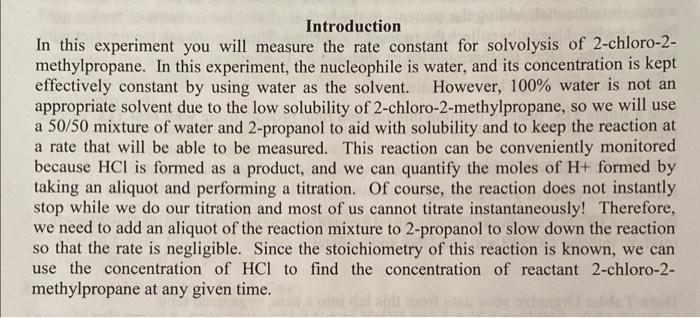Answered step by step
Verified Expert Solution
Question
1 Approved Answer
from this data, how do you calculate the intial concentration of 2-chloro-2mbethylpropane in the rxn mixture? what was the concentration of 2-chloro-2-methylpropane at each sampling
from this data, how do you calculate the intial concentration of 2-chloro-2mbethylpropane in the rxn mixture?
what was the concentration of 2-chloro-2-methylpropane at each sampling time?
1.00 mL of ~0.01 MNaOH
0.400 mL of 2-chloro-2-methylpropane 


Step by Step Solution
There are 3 Steps involved in it
Step: 1

Get Instant Access to Expert-Tailored Solutions
See step-by-step solutions with expert insights and AI powered tools for academic success
Step: 2

Step: 3

Ace Your Homework with AI
Get the answers you need in no time with our AI-driven, step-by-step assistance
Get Started


